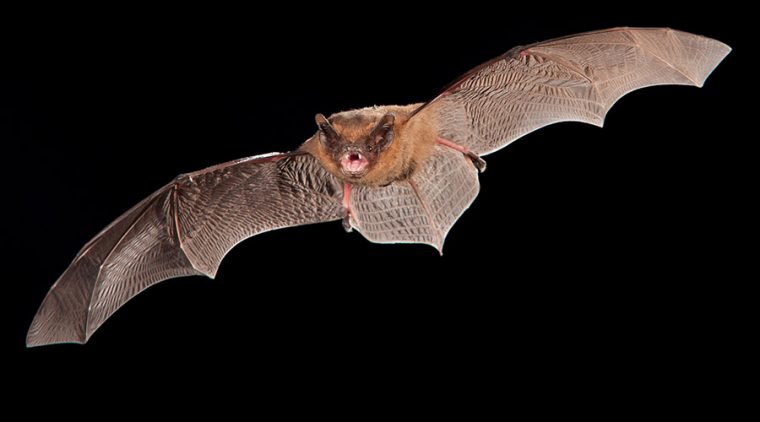Pipistrellus pipistrellus and Pipistrellus pygmaeus
ialtóg fheascrach and ialtóg shopránach
Ireland’s two smallest bat species, and also the commonest, the common and soprano pipistrelles are the bats most likely to be seen flying around soon after dusk in both urban and rural areas. Both have a rapid, twisting flight as they pursue tiny prey of midges, mosquitoes and small moths. A single pipistrelle (weighing no more than 5-6g, the weight of a 1 euro piece) may consume as many as 3,000 of these insects in one night. Pipistrelles are frequently found roosting in houses, although they also roost in other locations such as tree holes. In houses they prefer to occupy confined spaces such as behind hanging tiles and soffit boards or between roofing felt and roof tiles, rather than the main attic space.
The two are called common and soprano because the latter echolocates at a higher frequency peaking at 55kHz, compared with the former which echolocates at a peak frequency of 46kHz. The soprano pipistrelle tends to form nursery (or maternity) roosts with larger numbers of individuals (up to 1,500) compared with the common pipistrelle which would typically have a much smaller nursery roost size.
Trends in these species are monitored annually using the Car-based Bat Monitoring Scheme. Results from this scheme indicate that since 2003 the soprano pipistrelle has increased significantly while the common pipistrelle has also increased, albeit more slowly. The reasons for these increases are poorly understood but both species may be recovering from past declines, or responding to increased woodland cover and/or climate change.
